Nestled in the heart of Mediterranean cuisine, Dolma stands as a revered masterpiece, a testament to the artistry of filling and wrapping. This iconic dish, with its origins steeped in ancient traditions, captivates the senses with each carefully curated bite. The vibrant flavors of seasoned rice and spiced ground meat are lovingly encased in tender vine leaves, imparting a distinctive aroma and a tapestry of taste. As we embark on this culinary journey, let us pay homage to the ingenuity of generations past, embracing the rich heritage of Dolma, and reveling in the craft of transforming simple ingredients into a culinary treasure.

What are the benefits of Dolma?
Dolma, a cherished dish in Middle Eastern and Mediterranean cuisine, presents a host of benefits that extend far beyond its sumptuous flavors. Consisting of grape leaves wrapped around a tantalizing mixture of rice, vegetables, and aromatic herbs, this dish offers a substantial dose of essential nutrients, including fiber, vitamins, and antioxidants. Melding a rich tapestry of flavors and textures, dolma delivers a delectable and nutritionally dense experience, satisfying the palate while nourishing the body.
More than just a savory delight, dolma represents a cultural and communal culinary tradition, uniting individuals in the joy of shared dining experiences. The intricate process of meticulously rolling and filling each grape leaf imparts a sense of culinary artistry and tradition, emblematic of the care and consideration synonymous with Mediterranean and Middle Eastern cooking. Whether served as a main course or as part of a communal spread, dolma embodies the spirit of conviviality, bridging cultural divides and inviting all to partake in a cherished gastronomic tradition. With its rich flavors and cultural significance, dolma presents a compelling invitation to savor the timeless heritage and conviviality of Mediterranean and Middle Eastern cuisines.

Step into kitchen right now!!! Let’s try Dolma together!!!
Step 1:Prepare the Filling
In a large skillet, heat the olive oil over medium heat. Add the chopped onion and garlic, sautéing until softened and translucent. If using, add the ground meat to the skillet and cook until browned, breaking it up with a spoon as it cooks. Add the rice to the skillet and stir to coat with the oil and onions. Cook for 2-3 minutes until the rice starts to become translucent. Stir in the parsley, dill, mint, pine nuts, currants or raisins, salt, pepper, and cinnamon (if using). Add the juice of one lemon and mix well. Remove the skillet from heat and let the mixture cool slightly.

Step 2:Prepare the Grape Leaves
Rinse the grape leaves thoroughly under cold water to remove excess brine and pat dry with a towel. If the leaves have thick stems, cut them off with a knife.

Step 3:Stuff the Grape Leaves
Place a grape leaf shiny side down on a flat surface. Add about 1 tablespoon of filling (more or less, depending on the size of the leaf) near the stem end of the leaf. Fold the sides of the leaf over the filling, then roll the leaf tightly from the stem end to the tip, forming a neat cylinder. Be gentle to avoid tearing the leaves. Repeat with the remaining leaves and filling.

Step 4:Cook the Dolma
Line the bottom of a large pot with a few grape leaves (to prevent the stuffed leaves from sticking or burning). Arrange the stuffed grape leaves seam-side down in a single layer in the pot, packing them snugly but not too tightly. If necessary, make additional layers. Drizzle olive oil and lemon juice over the dolma. Place a heatproof plate on top of the dolma to weigh them down and prevent them from unrolling during cooking. Add enough water or broth to the pot to just cover the dolma. Bring to a simmer over medium heat, then reduce the heat to low and cover the pot. Simmer gently for 45-60 minutes, or until the rice is cooked and the leaves are tender. Check occasionally and add more liquid if necessary.

Step 5:Serve
Let the dolma cool slightly in the pot before serving. They can be served warm or at room temperature. Arrange the dolma on a serving platter and drizzle with additional olive oil and lemon juice if desired. Garnish with lemon wedges and fresh herbs.

The culinary journey of Dolma concludes with a medley of enchanting flavors and tender textures. Each bite encapsulates a harmonious marriage of seasoned rice and savory ground meat, enrobed in the embrace of tender vine leaves. As the final taste lingers, it leaves an indelible mark, inviting a moment of culinary reflection and appreciation. This iconic dish not only celebrates the rich tapestry of Mediterranean flavors but also beckons one to savor the art of filling and rolling, transforming humble ingredients into an edible masterpiece. Let the memory of this Dolma inspire a continued reverence for time-honored recipes and the joy of savoring each delightful morsel.
Print
Dolma
- Total Time: 1hour
Description
Nestled in the heart of Mediterranean cuisine, Dolma stands as a revered masterpiece, a testament to the artistry of filling and wrapping. This iconic dish, with its origins steeped in ancient traditions, captivates the senses with each carefully curated bite. The vibrant flavors of seasoned rice and spiced ground meat are lovingly encased in tender vine leaves, imparting a distinctive aroma and a tapestry of taste.
Ingredients
For the Filling:
- 1 cup uncooked long-grain rice or short-grain rice (like Arborio)
- 1/2 pound ground lamb or beef (optional, for a non-vegetarian version)
- 1 large onion, finely chopped
- 2–3 cloves garlic, minced
- 1/4 cup fresh parsley, finely chopped
- 1/4 cup fresh dill, finely chopped
- 1/4 cup fresh mint, finely chopped
- 1/4 cup pine nuts (optional)
- 1/4 cup currants or raisins (optional)
- 1/4 cup olive oil
- Juice of 1 lemon
- 1 teaspoon salt
- 1/2 teaspoon ground black pepper
- 1/2 teaspoon ground cinnamon (optional, for a warm flavor)
For the Dolma:
- 1 jar (16 oz) grape leaves in brine, rinsed and drained
- 1/4 cup olive oil
- Juice of 1–2 lemons (to taste)
- 2–3 cups water or chicken/vegetable broth
Instructions
Step 1:Prepare the Filling
- In a large skillet, heat the olive oil over medium heat. Add the chopped onion and garlic, sautéing until softened and translucent.
- If using, add the ground meat to the skillet and cook until browned, breaking it up with a spoon as it cooks.
- Add the rice to the skillet and stir to coat with the oil and onions. Cook for 2-3 minutes until the rice starts to become translucent.
- Stir in the parsley, dill, mint, pine nuts, currants or raisins, salt, pepper, and cinnamon (if using). Add the juice of one lemon and mix well.
- Remove the skillet from heat and let the mixture cool slightly.
Step 2:Prepare the Grape Leaves
- Rinse the grape leaves thoroughly under cold water to remove excess brine and pat dry with a towel.
- If the leaves have thick stems, trim them off.
Step 3:Stuff the Grape Leaves
- Place a grape leaf shiny side down on a flat surface. Add about 1 tablespoon of filling (more or less, depending on the size of the leaf) near the stem end of the leaf.
- Fold the sides of the leaf over the filling, then roll the leaf tightly from the stem end to the tip, forming a neat cylinder. Be gentle to avoid tearing the leaves.
- Repeat with the remaining leaves and filling.
Step 4:Cook the Dolma
- Line the bottom of a large pot with a few grape leaves (to prevent the stuffed leaves from sticking or burning).
- Arrange the stuffed grape leaves seam-side down in a single layer in the pot, packing them snugly but not too tightly. If necessary, make additional layers.
- Drizzle olive oil and lemon juice over the dolma.
- Place a heatproof plate on top of the dolma to weigh them down and prevent them from unrolling during cooking.
- Add enough water or broth to the pot to just cover the dolma. Bring to a simmer over medium heat, then reduce the heat to low and cover the pot.
- Simmer gently for 45-60 minutes, or until the rice is cooked and the leaves are tender. Check occasionally and add more liquid if necessary.
Step 5:Serve
- Let the dolma cool slightly in the pot before serving. They can be served warm or at room temperature.
- Arrange the dolma on a serving platter and drizzle with additional olive oil and lemon juice if desired. Garnish with lemon wedges and fresh herbs.
Equipment
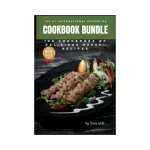 Buy Now →
Buy Now → 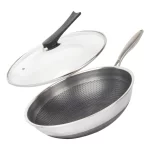
12.5″ 316L Stainless Steel Honeycomb Non Stick Wok Pan Stir-fry Wok with Lid
Buy Now →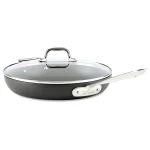
All-Clad HA1 Hard Anodized Nonstick Fry Pan
Buy Now →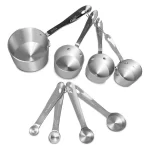
All-Clad Measuring Cup & Spoon Combo Set
Buy Now →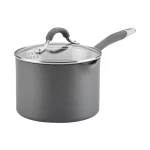
Circulon Radiance Hard-Anodized Nonstick Straining Saucepan
Buy Now → Buy Now →
Buy Now → 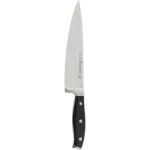
HENCKELS Forged Premio Razor-Sharp 8-Inch Chef Knife
Buy Now →
Make 75% commission with Cooking Tips!
Buy Now →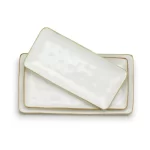 Buy Now →
Buy Now → Notes
- Dolma can be stored in the refrigerator for several days and actually taste better after a day as the flavors meld.
- They can be served as an appetizer or as part of a mezze spread, accompanied by yogurt, tzatziki, or a dipping sauce of your choice.
- Prep Time: 15minutes
- Cook Time: 45minutes
- Category: RECIPE,HEALTH,Cooking Tips,Mediterranean
-
How can you prevent the stuffed grape leaves from falling apart during the cooking process?
Carefully select intact and pliable grape leaves, blanch them briefly to soften, and ensure a compact but not overly tight filling to prevent bursting. Arrange the dolma snugly in the pot while leaving a small space between each to prevent unraveling.
-
What methods can be used to enhance the flavors of the rice and meat mixture without overpowering the natural taste of the grape leaves?
Incorporate a balance of fresh herbs such as mint, dill, and parsley with the rice and meat mixture to impart subtle aromatic notes. Additionally, a hint of aromatic spices like cinnamon and allspice can be added to complement the overall flavor profile.
-
How do you ensure that the dolma are uniformly cooked and tender without becoming mushy?
Add a layer of sliced potatoes or tomatoes to the bottom of the pot to prevent sticking and to provide gentle heat diffusion. Pour a combination of broth and lemon juice over the dolma, cover the pot with a weighted plate to keep them intact, and simmer over low heat to achieve even, tender results.

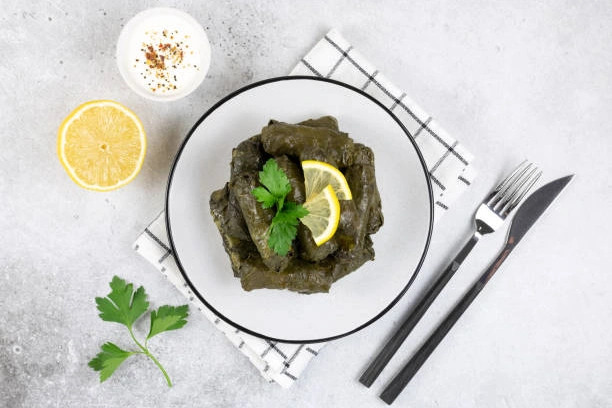


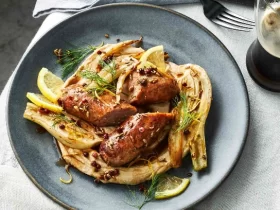
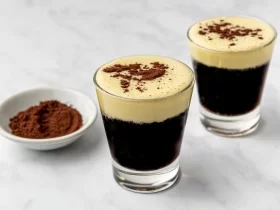
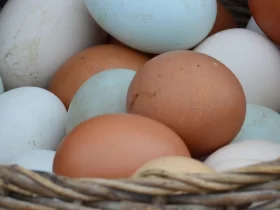
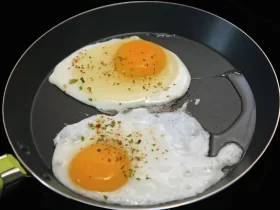
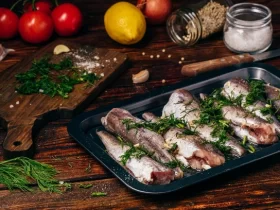
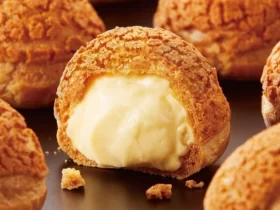
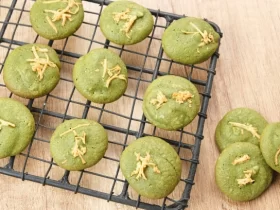
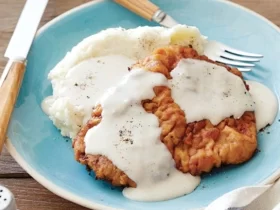
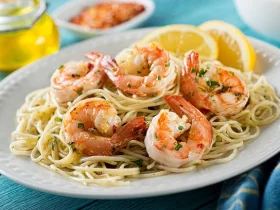

Leave a Reply